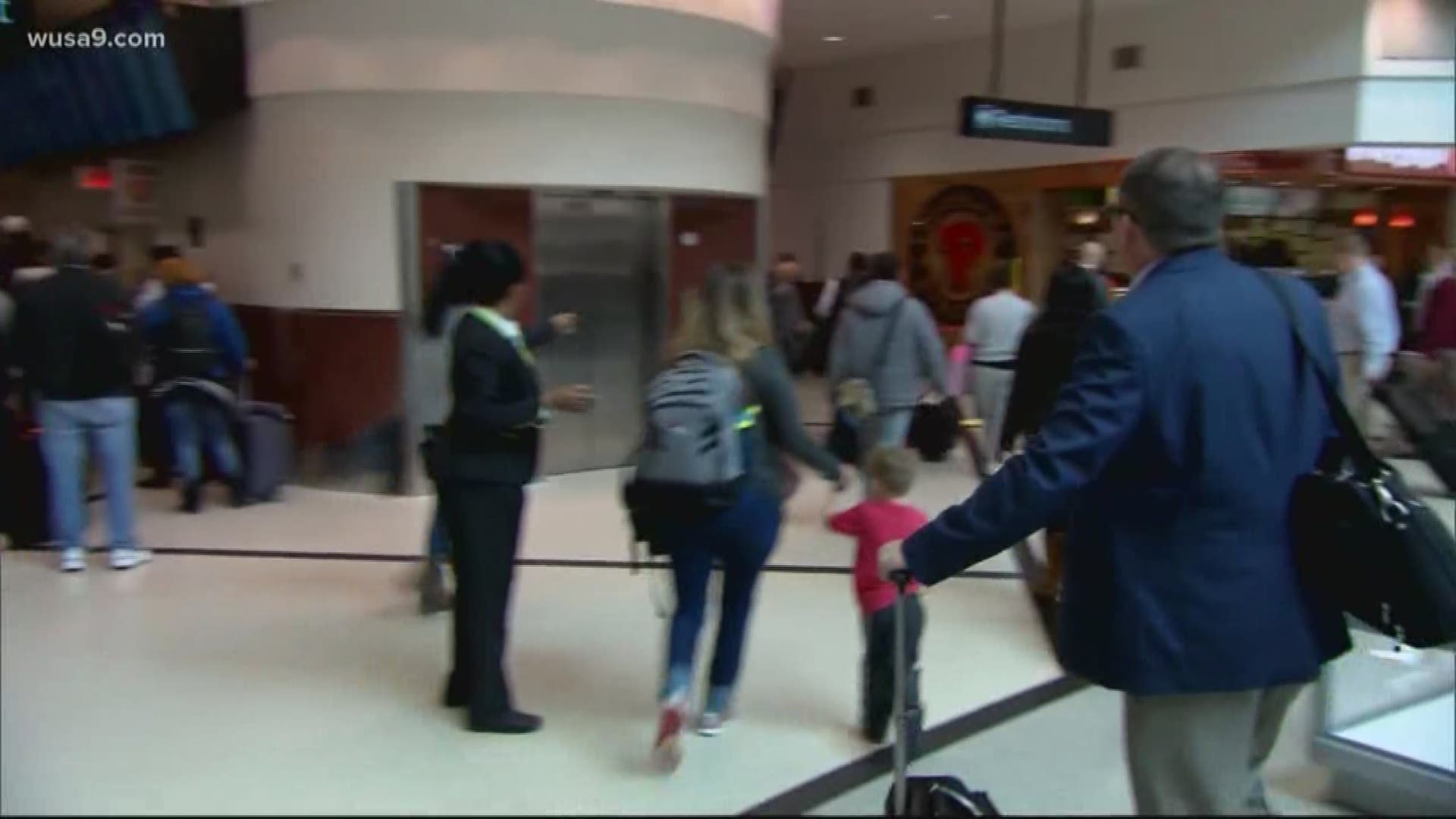WASHINGTON D.C., DC — Question:
Could screening for Coronavirus be enacted at D.C.-area airports, like is being done at other international hubs?
Answer:
This is not part of the plan from the Centers For Disease Control and Prevention, which is currently focusing on five airport hubs. Passengers are being re-directed to these five airports, if they are coming from the impacted region of China.
Sources:
Christina Saull -- Corporate Communications Manager for Metropolitan Washington Airport Authority
Jonathan Dean -- Director for The Maryland Aviation Administration
Dr. Martin Cetron -- Director for the Division of Global Migration and Quarantine for The Centers For Disease Control and Prevention
Benjamin Haynes -- Senior Press Officer at Centers For Disease Control and Prevention
Process:
For this story, the Verify team focused on the three major airports in the D.C. area:
- Ronald Reagan National Airport, which has 98 nonstop destinations, although all of them are domestic.
- The Baltimore-Washington International Airport, which has various international flights, but none to Asia where the Coronavirus is prevalent.
- Dulles International Airport, which has various international flights, including some to China. This airport has flights to Hong Kong and Beijing.
The Verify team spoke with Christina Saull, from MWAA, and Jonathan Dean, from the MAA. They confirmed that all three local airports are without screening efforts. This effort is completely controlled by the CDC, which is currently conducting screenings at five airports across the country.
Initially, there were screenings at John F. Kennedy International Airport, Los Angeles International Airport and San Francisco International Airport. Earlier this week, the CDC added Hartsfield-Jackson Atlanta International Airport and O'Hare International Airport to the list.
"These five airports already receive the majority of travelers from Wuhan," Benjamin Haynes, a Senior Press Officer for the CDC, said.
According to Haynes, JFK and SFO are the only two airports in the U.S. with direct flights from Wuhan. He said LAX was added to the initial list because of an equivalent volume of travelers from indirect, connecting flights.
In a conference call with media, Dr. Martin Cetron said passengers from the Wuhan region of China would be funneled to one of these five airports, before heading to their final destination.
"This idea of funneling means redirecting," he said. "And reissuing tickets so all the arriving passengers from Wuhan would come in to the airports where we can surge this capacity at."
For example, if a Wuhan traveler expected to fly to Beijing, and then catch a flight to Dulles, this would no longer be possible without a pit-stop at JFK, or another one of the five airports.
According to the Centers for Disease Control and Prevention, coronaviruses are a large family of viruses, some causing respiratory illness in people and others circulating among animals including camels, cats and bats.
Rarely, animal coronaviruses can evolve and infect people and then spread between people, such as has been seen with Severe Acute Respiratory Syndrome (SARS) and Middle East Respiratory Syndrome (MERS).

